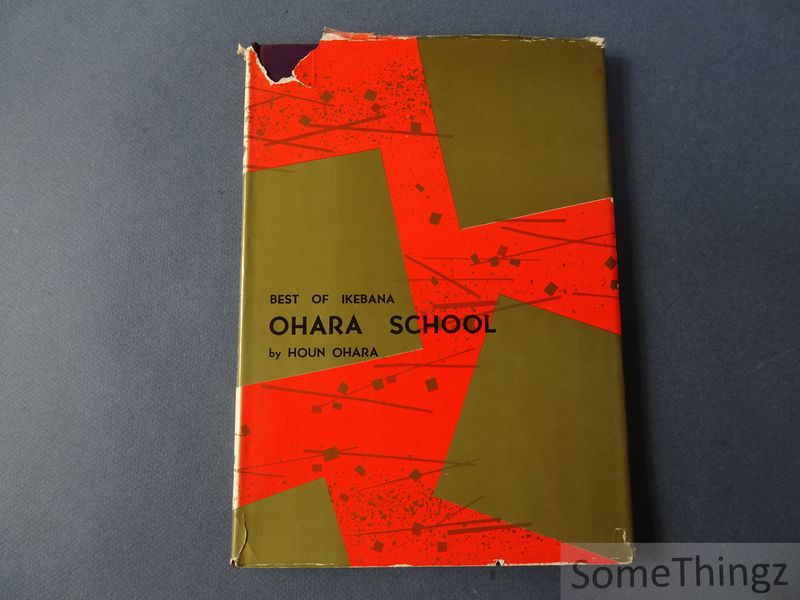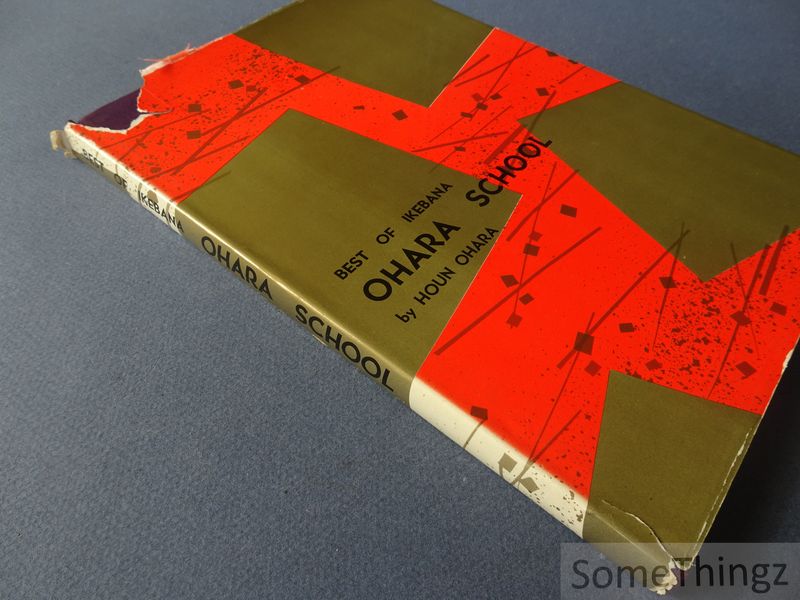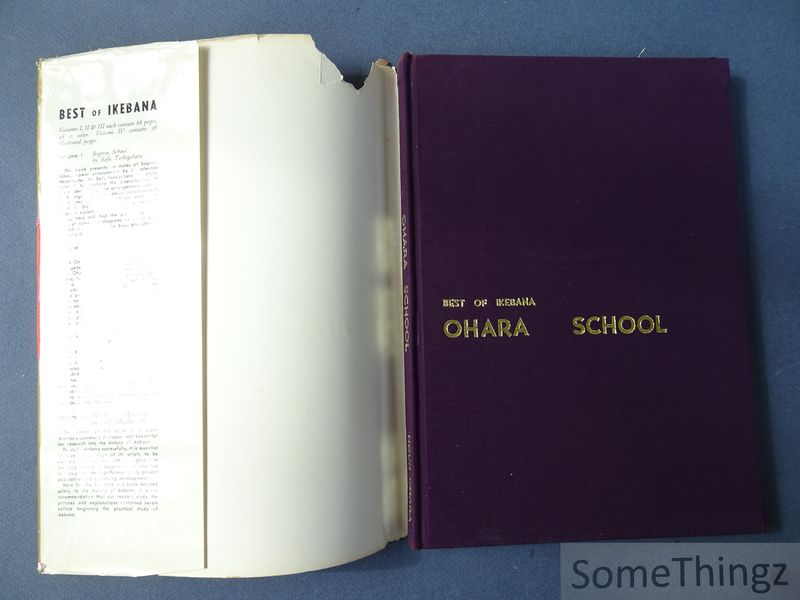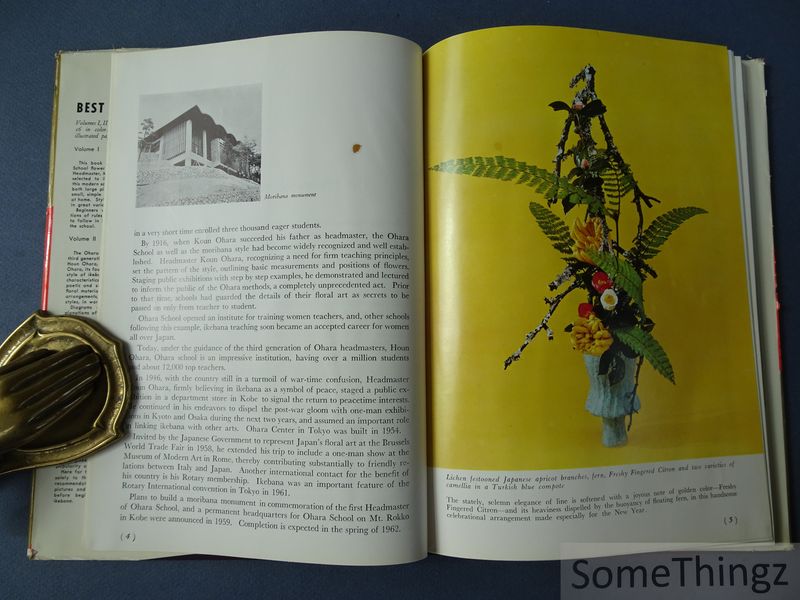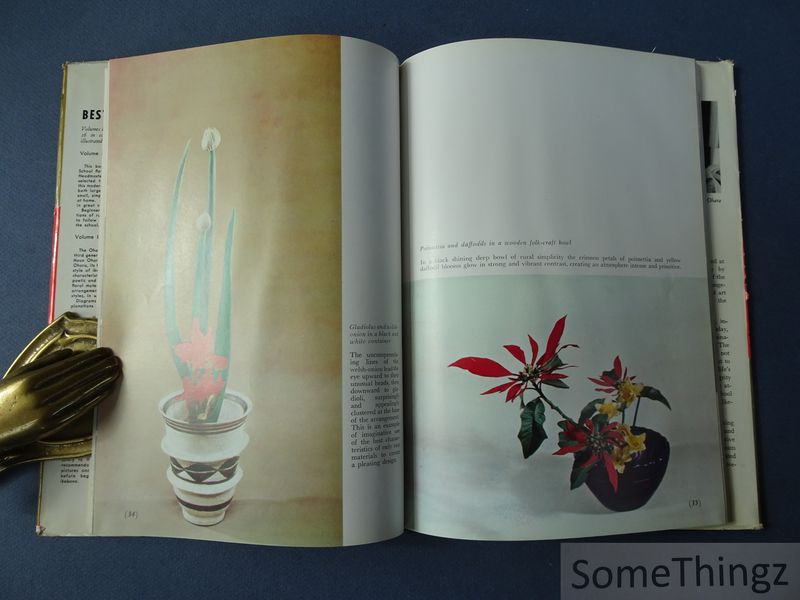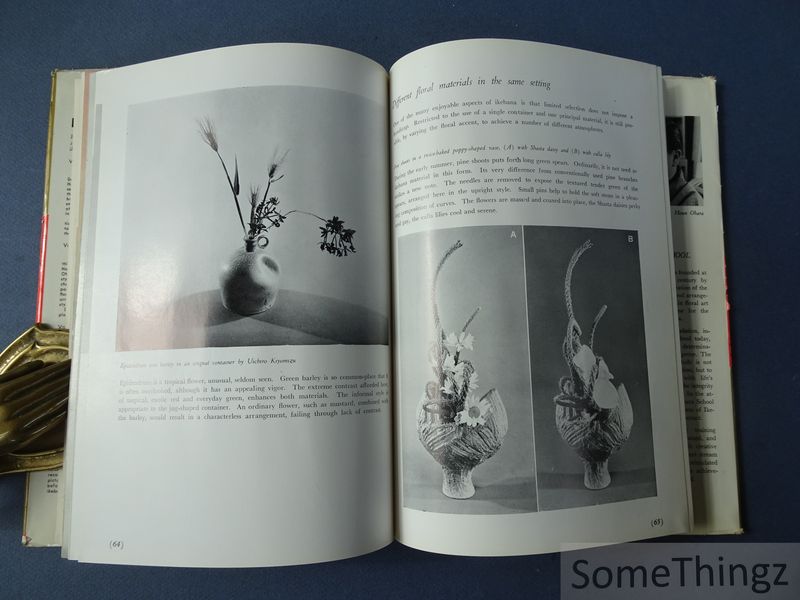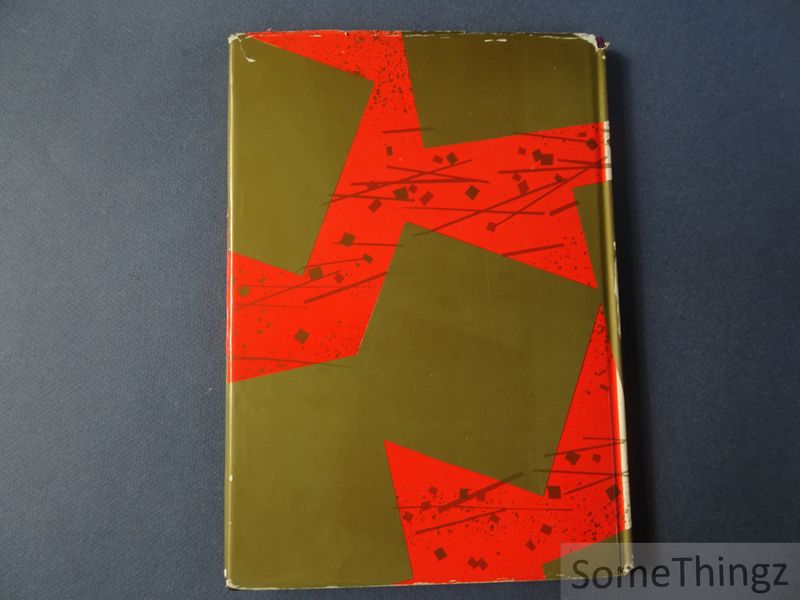BOOKS
Ohara, Houn.
Best of Ikebana. Ohara school.
Tokyo, Shufunotomo Publishing, 1962.
Sold
Bound, purple cloth with dustjacket, 88pp., 19x26cm., illustr. in col. and b/w., in good condition (dustjacket damaged, book itself in very good condition: see photo's).
"Best of Ikebana: Ohara School" by Houn Ohara, published in 1962, offers an insightful exploration into the principles and practices of the Ohara School of Ikebana. This volume delves into the school's distinctive approach to Japanese floral art, emphasizing harmony with nature, seasonal awareness, and the expressive potential of floral arrangements.? The book begins by tracing the historical development of the Ohara School, founded by Unshin Ohara in the late 19th century. Unshin introduced the Moribana style, characterized by the use of shallow, flat containers (suiban) that allowed for more naturalistic and landscape-inspired arrangements. This innovation marked a departure from the traditional vertical styles of Ikebana, aligning the art form with the changing aesthetics of modern Japan. Subsequent chapters detail the evolution of the school's styles and techniques under the guidance of successive headmasters. Koun Ohara formalized the Moribana style and expanded the school's reach, while Houn Ohara, the third headmaster, introduced the Rimpa and Bunjin styles, drawing inspiration from Japanese painting and Chinese literati culture, respectively. These styles emphasized artistic expression and intellectual depth within floral arrangements. The book also outlines the foundational forms and methods taught within the Ohara School, including the Basic Forms of Ikebana, the Five Basic Styles, and the Five Methods unique to the school. It provides practical guidance on creating various arrangements, such as upright, slanting, cascade, and contrasting styles, in both Moribana and Heika formats. Detailed instructions and illustrations assist beginners in mastering these techniques, highlighting the importance of line, balance, and the natural characteristics of plant materials.? Furthermore, the volume explores advanced concepts like natural-scenery arrangements, water-plant compositions, and the use of unconventional materials like dried plants, vines, and wood. It emphasizes the significance of selecting appropriate materials to convey seasonal themes and personal expression. The inclusion of a glossary aids readers in understanding specialized terminology associated with Ohara Ikebana.? "Best of Ikebana: Ohara School" serves as both a historical account and a practical manual, reflecting the school's commitment to innovation, education, and the harmonious integration of floral art into everyday life. Through its comprehensive coverage of styles, techniques, and philosophies, the book offers valuable insights for both novice and experienced practitioners of Ikebana.

